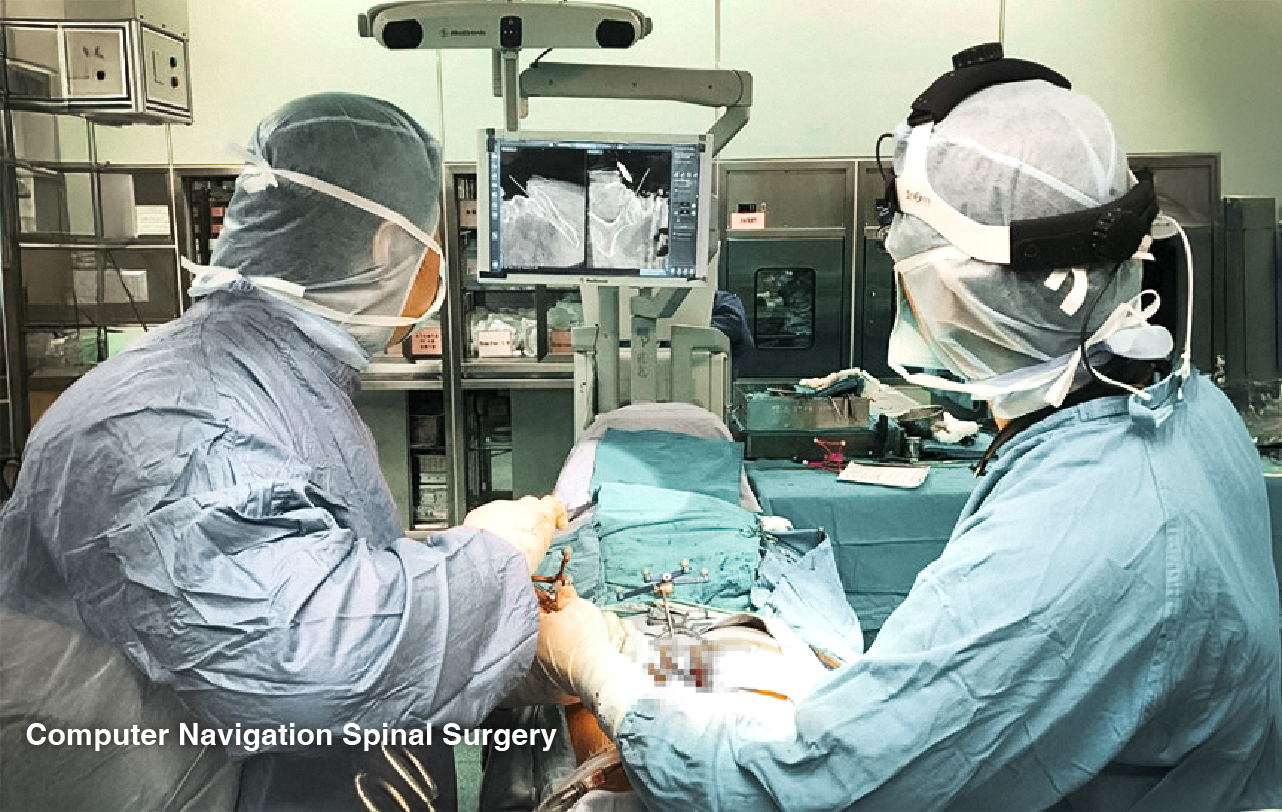Hospital Robots
O-arm Navigation - Assisted Minimally Invasive Spine Surgery

O-arm Navigation-Assisted Minimally Invasive Spine Surgery
With the advancement of modern minimally invasive spine surgery techniques—particularly the integration of 3D computer-assisted navigation, image fusion, and intraoperative guidance—surgical precision has significantly improved. These technologies help minimize the risk of neural and musculoskeletal injury, as well as reduce the incidence of postoperative complications.
1. Preoperative Planning and Intraoperative Image-Guided Navigation:These tools enable surgeons to execute procedures with greater precision.
2. Reduction of Intraoperative Risks and Complications:The use of navigation technologies effectively decreases the likelihood of neural injury, intraoperative bleeding, and operative time.
3. Minimized Soft Tissue Disruption:Minimally invasive techniques help preserve soft tissue integrity, leading to reduced postoperative pain.
4. Faster Postoperative Recovery:Accurate screw placement and optimal positioning of spinal fusion implants contribute to effective symptom relief and facilitate a quicker recovery for patients.
.png)
Journal Article
- Computer tomography assessment of pedicle screw placement in lumbar and sacral spine: comparison between free-hand and O-arm based navigation techniques.
https://pubmed.ncbi.nlm.nih.gov/21253780/ - Accuracy and safety of targeting using intraoperative "O-arm" during placement of deep brain stimulation electrodes without electrophysiological recordings.
https://pubmed.ncbi.nlm.nih.gov/26778050/ - Computer navigation versus fluoroscopy-guided navigation for thoracic pedicle screw placement: a meta-analysis.
https://pubmed.ncbi.nlm.nih.gov/26686852/ - Clinical outcomes following spinal fusion using an intraoperative computed tomographic 3D imaging system.
https://pubmed.ncbi.nlm.nih.gov/28291408/
Patents
- TFDA No. US9,411,057 B2
- Taiwan MOHW Medical Device License No. 028547
Contact Window
Department of Orthopedics
+886-4-22052121 ext. 15052
032303@tool.caaumed.org.tw
